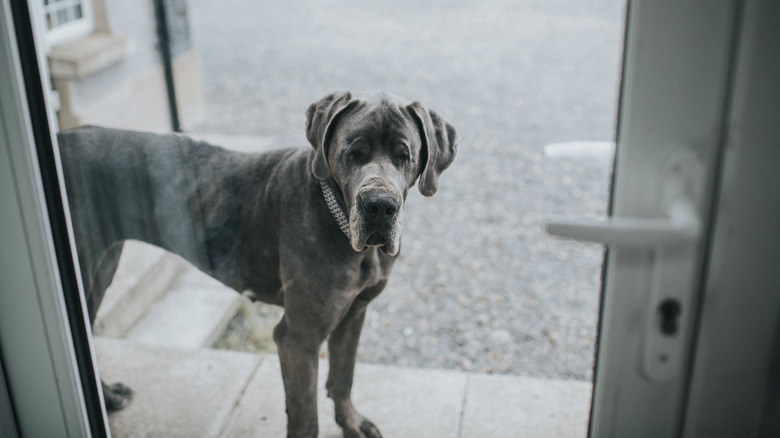What Is The Difference Between Medium And Large Breed Dogs?
It's easy to look at a great Dane and know it's a large dog and to see a Yorkshire terrier and know it's a small dog. But when canines can weigh as little as 4 pounds or over 100 pounds depending on the breed, it's not easy to define what makes a dog medium-sized versus large. While there are some vague definitions based solely on weight, the distinction mostly comes down to who you ask.
Medium and large dog weight distinctions
Different sources offer different definitions of what makes a breed large or medium based on weight. Royal Canin defines a medium breed dog as 23 to 55 pounds and a large dog to be over 55 pounds. According to Pet Place, medium breed dogs weigh from 35 to 65 pounds and large breeds as those over 55 pounds. On the heavy end, Hill's Pet Nutrition defines small dogs as 21 pounds or less, with any breed between 55 to 110 pounds considered a large dog.
Medium and large dog height distinctions
Just like weight definitions, the height distinction between a medium and large breed dog will vary based on who you ask. For example, Dogster describes medium breeds as having an average height of 12 to 24 inches tall. However, when defining a large- or medium-sized dog, height is less likely to be taken into account as dogs can be tall and thin or short and stocky.
After all, bulldogs are considered to be a medium breed by most people since they weigh 40 to 50 pounds, but they are only 14 to 15 inches tall according to AKC breed standards. On the other hand, the AKC standards for salukis say they should weigh 40 to 65 pounds, but the males stand 23 to 28 inches tall. Both bulldogs and salukis are considered medium-sized dogs by many.
Medium dog characteristics
Medium dogs are some of the most popular breeds in America due both to the sheer number of breeds that fall into this weight range and due to the benefits associated with their size. Small breeds are often considered fearful and large breeds are prone to many health problems; thus some medium breeds may be more physically and mentally healthy (this will always vary from dog to dog). A number of medium dogs were bred to be herders or hunters, which means that while they may need less space to live based on their size, they still can be high energy and may require lots of walks.
Examples of medium dog breeds include the American Staffordshire terrier, the Australian shepherd, the basset hound, the beagle, the boxer, and the whippet.
Large dog characteristics
By their nature, large dogs need more space to walk and run. Although they need to be walked regularly to burn off energy, a downside of large dogs is that some people are simply not strong enough to hold back a dog that can weigh over 55 pounds. As a result, large dogs should receive a lot of obedience training while they are puppies so they learn not to pull when they reach their full size. While many of these dogs look imposing, they are often gentle giants and lovable family pets.
Healthy Paws Pet Insurance points outs that large dogs may have many health problems, often relating to their joints, including arthritis and hip or elbow dysplasia, and digestive tract disorders such as gastric dilatation and volvulus. As a result, owners should be prepared for spending more money on vet bills later on. Many large-breed dogs also die younger than medium-or-small-sized breeds.
Examples of large dog breeds include great Dane, Saint Bernard, Bernese mountain dog, mastiff, and Irish wolfhound.
